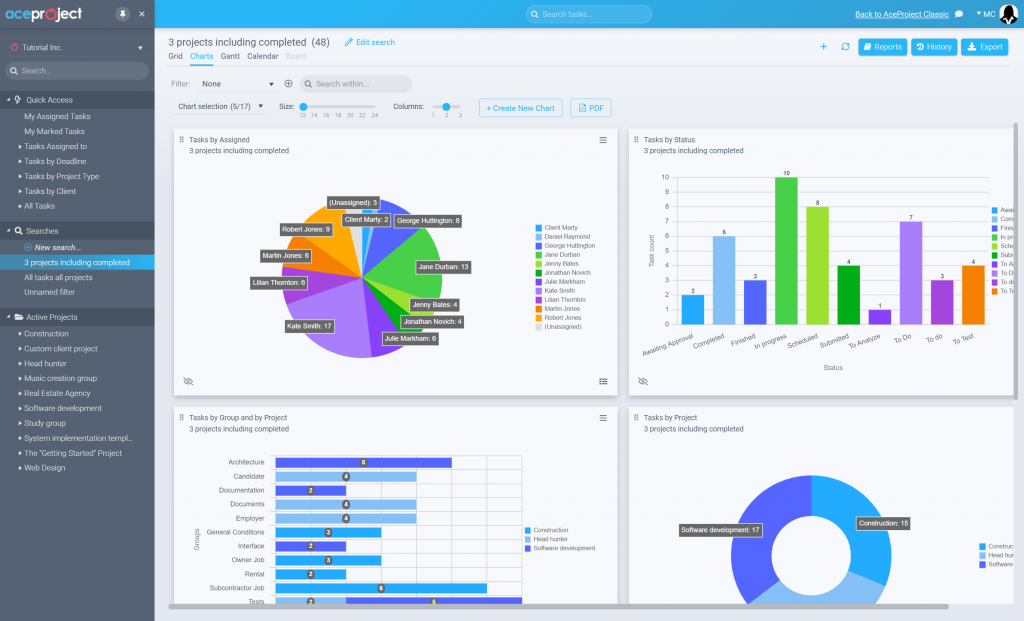
Have you ever got an excellent project idea but didn’t know where to begin? Or perhaps you’ve started a project but found it challenging to stay organized and on track? If so, you’re not alone.
Managing a project can be daunting, especially for students juggling many things simultaneously. Imagine you must deal with coursework, extracurricular activities, and personal life. However, with the right approach and mindset, students can master project management and turn their ideas into reality. Let’s find out how it works.
In this article, we will provide a step-by-step guide to student project management, including:
- Common challenges
- Key steps
- Tools and resources
- Tips for success
But first, let’s discuss how to find time for project management if you are overloaded with essay assignments.
Useful Tools and Resources
There are many tools and resources available for students to improve their skills. Some popular tools include Trello, Asana, and Google Docs. These tools can help students manage tasks, collaborate with team members, and track progress. Resources such as books, online courses, and workshops can also help develop necessary skills.

AceProject, often used in software development projects, is another popular application. AceProject allows users to track tasks, bugs, and issues in real-time. On top of that, it provides a range of features such as kanban boards, time tracking, and document management.
Templates and frameworks can also help new students with this kind of work. For example, the Project Management Body of Knowledge (PMBOK) framework provides a systematic approach to project management. It includes tons of templates for tasks, including:
- Project charter
- Stakeholder analysis
- Risk management.
Making Time for Project Management
Students often struggle when tasked with working on several different projects at once. Many students are overwhelmed with essay requirements and find it difficult to devote sufficient time to project management. However, there are ways for students to maximize their time and keep on top of their assignments. Hiring a professional writing service is one option. These services and college papers can help relieve students of some of their writing responsibilities. This way, experts give learners more time to devote to other project management duties. A reliable paper writing service can create an essay from scratch that precisely addresses your assignment’s prompt. Students who worry about their writing abilities or have trouble keeping up with deadlines may benefit significantly from this.
Common Challenges Faced by Students
Before diving into the critical steps in student project management, let’s look at some common challenges students face. One of the most significant challenges is time management. As mentioned above, balancing coursework, extracurricular activities, and personal life can be challenging enough, but adding a project can seem impossible. However, other challenges include lack of experience, unclear objectives, limited resources, and poor communication.
Despite these challenges, remember that successful project management is achievable. Here is what can help you:
- Breaking the process down into manageable steps
- Setting realistic goals
- Utilizing practical tools and resources.
Key Steps in Student Project Management
- Ideation. The first step in any project is to come up with an idea. You can do it individually or in a group. It’s all up to you. Students should brainstorm ideas and narrow them down to one they are passionate about that aligns with their objectives.
- Planning. Once the idea is established, it’s time to plan. This involves defining objectives, setting timelines, establishing roles and responsibilities, and identifying resources needed. One helpful tool for planning is a Gantt chart, which can help students visualize their project timeline and ensure that tasks are completed on schedule.
- Execution. This is the stage where the plan is put into action. This involves:
- Coordinating and communicating with team members
- Tracking progress
- Making adjustments as needed.
Establishing clear communication channels and providing regular progress updates is essential to ensuring everyone is on the same page.
- Monitoring and Control. As the work progresses, monitor and control it to ensure it stays on track. This involves:
- Tracking progress against timelines
- Assessing risks
- Making adjustments to the plan as needed.
A dashboard is a valuable tool for monitoring and controlling. It can provide real-time updates on progress and identify areas that need attention.
- Completion and Evaluation. Once your project is completed, it’s time to evaluate its success. Here is what you should start doing:
- Assessing whether the objectives were met
- Identifying any areas for improvement
- Reflecting on lessons learned.
No matter what the outcomes are, try to celebrate successes and learn from any mistakes made.
Ensuring Project Success
To ensure that a project stays on track and meets its objectives, students should establish clear communication channels with their team members, set realistic timelines, and establish task accountability. It’s also essential to have a plan in place for dealing with unexpected issues or setbacks that may arise. One useful technique for managing unexpected matters is the “5 Whys” method, which involves asking “why” five times to get to the root cause of a problem and identify a solution.
To use the 5 Whys method, you start by identifying the problem and asking “why” it occurred. Then, you ask “why” again, using the answer to the previous question as the basis for the next question. You repeat this process five times or until you have identified the root cause of the problem.
For example, let’s say that a manager discovers that their project is behind schedule. They can use the 5 Whys method to identify the root cause of the issue and develop a solution. Here’s how the process might look:
- Why is the project behind schedule? Because the team missed a deadline.
- Why did the team miss the deadline? Because they underestimated the amount of work required.
- Why did they underestimate the amount of work required? Because they didn’t have a clear understanding of the requirements.
- Why didn’t they have a clear understanding of the requirements? Because the requirements were not communicated to the team.
- Why were the requirements not communicated to the team? The project manager assumed everyone understood the requirements without confirming them with the team.
In this example, the root cause of the problem is that the manager did not communicate the requirements clearly to the team.
The Importance of Communication and Collaboration
Communication and collaboration are essential to successful project management. Students should establish clear communication channels with their team members, provide regular updates on progress, and seek feedback throughout the project. Collaboration is also essential, allowing team members to pool their skills and resources to achieve a common goal.
Successful Student Project Examples and Strategies
One example of a successful student project is a team of engineering students who developed a solar-powered wheelchair for people with disabilities. Their strategy included conducting extensive research, establishing clear roles and responsibilities, and regular communication and feedback sessions. This work addressed a critical need and provided valuable experience for the students involved.
Another example is a group of students who created a social media campaign to raise awareness about mental health. Their strategy included developing a clear message, identifying target audiences, and using social media platforms effectively. The campaign successfully reached a wide audience and promoted mental health awareness.
Evaluating Success and Learning from Mistakes
To evaluate the success, students should:
- Assess whether the objectives were met
- Identify any areas for improvement
- Reflect on lessons learned.
It’s essential to take note of any mistakes made and learn from them to avoid similar mistakes in future projects. Reflection and self-assessment are crucial in improving management skills and achieving success in future endeavors.
Tips for Students New to Project Management
Starting small and working on simple tasks is essential for students new to this field before tackling more complex ones. Students should also seek feedback and guidance from experienced project managers and establish a clear plan for managing their time. Moreover, learners should be open to learning and adapting to new challenges and feedback.
IT and Project Management
In many ways, IT project management is like a high-tech game of chess. Just as chess players need to plan, anticipate their opponent’s moves, and be flexible when things don’t go according to plan, IT project managers must also be strategic and adaptable.
IT Project Management Course
Many universities offer courses or degrees that can provide you with a solid foundation in project management principles and methodologies. These courses can help you learn about key concepts such as:
- Planning
- Budgeting
- Risk management
- Monitoring and control.
Conclusion
Student project management can be challenging, but with the right approach and mindset, students can successfully manage their projects and turn their ideas into reality. Students can overcome common challenges and succeed in their projects by following the key steps outlined in this article. Project management skills are not only essential in the academic setting but also in the professional world. By developing these skills early on, students can set themselves up for success in their future careers.
Ideation. The first step in any project is to come up with an idea.
Please explain